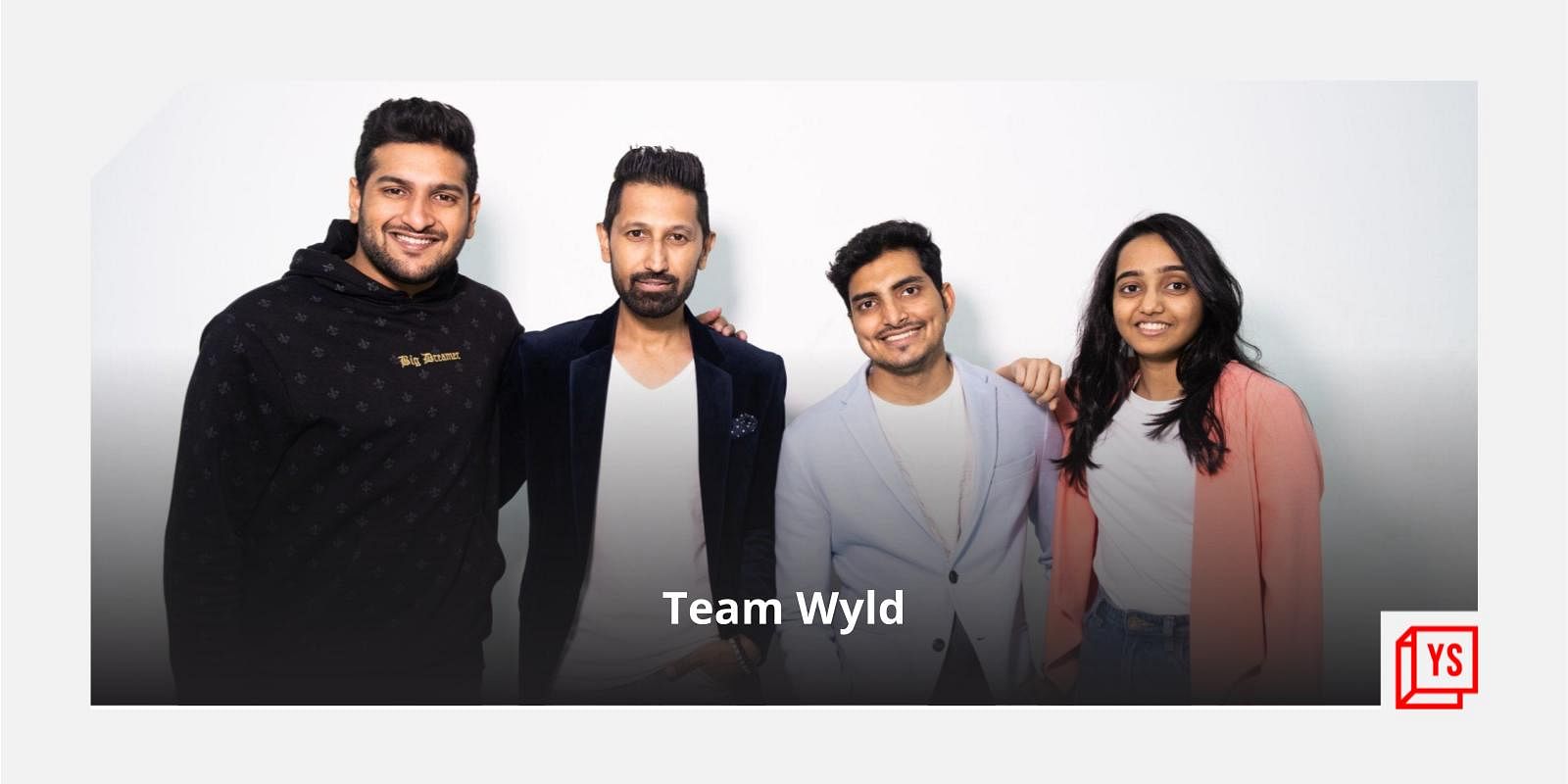Some people are known for giving the best recommendations on everything — from food, shopping, to fashion and anything in between. If we really ponder, these people are nothing less than influencers.
It is these influencers that Yash Sakhlecha, Dishant Sanghvi, and Aashna Sakhlecha wanted to bring to the limelight with their startup Wyld.
Launched in 2021 in Tardeo, Maharashtra, Wyld is a phygital social currency app built on the principle that the influencer market needs to accommodate beyond the elite few and help everyone monetise their influence.
The startup raised $350,000 in pre-seed funding led by Better Capital. The round also saw participation from renowned entrepreneurs such as Aman Gupta and Sameer Mehta, co-founders of boAt; Aditi Shrivastava, co-founder of Pocket Aces; Malini Agarwal, founder of MissMalini; Nikunj Lotia, popularly known as BeYouNick, and others.
In October 2021, luxury lifestyle influencer Rij Eappen joined the team of Wyld as a co-founder.
For the everyday influencer
“Everyone has an influence,” says Yash, Co-Founder, and CEO of Wyld.
An IIT-Mumbai alum, Yash and Co-Founder Dishant pivoted from engineering to the influencer economy with the belief that the future of e-commerce growth will be creator and influencer-led.
Wyld claims to have worked with more than 200 brands, and 10,000 influencers, with a combined social media reach of 64 million. It has gone through three product iterations to finally arrive at this model. The startup has a small team of around 10 people.
To explain the premise of Wyld, Yash asks, “When was the last time you bought something that some celebrity or influencer recommended versus something that was recommended by your friends or family members?”
“We are tapping into this influence that people have within their immediate circles, which is much more powerful and authentic than that of a big influencer,” he adds.
Brands already keep aside capital for influencer marketing. However, there is no guarantee if the money spent is actually creating the expected influence. This is where Wyld comes in.
“One of the significant feedback we have received is that influencer marketing campaigns are not necessarily market-driven with limited return on investment. So, brands are increasingly turning to nano influencers with good social media activity,” says Yash.
Nano influencers are Instagram users with between 1,000 and 10,000 followers. These influencers are niche players with high engagement. Rij added that brands are slowly recognising the potential of these influencers in creating a more authentic market for their products.
The workings of the currency
According to Wyld, it hands out a social currency card that gets credited with money based on a Wyld score — an AI social scoring system determined by the number of followers, reach, engagement, frequency of posts and other such parameters. This, it says, takes away the sole focus on only the follower count to the real and organic traction that the person acquires on a daily basis.
“All you have to do is that the next time you buy something from our partner brands, post about it while tagging the brand. Based on the traction received on your post and your Wyld score, money would be credited to your account or Wyld card. It is essentially digitising word-of-mouth,” says Yash.
The partner brands provide the users cashback ranging from 30 percent all the way up to 100 percent of the purchase value within 30 days. Some of the partner brands of Wyld are from sectors such as fashion, sports and activewear, footwear, food and beverages, groceries and more. The Wyld card can be used as a regular debit or credit card for making payments.
Like any other fintech company, the revenue model for Wyld involves charging an interchange fee in every transaction using the Wyld card. It also gets a share in the cashback offered by the brands.
Building the product and the challenge
Wyld believes that the team’s experience in the influencer marketing ecosystem along with continued research contributes to USP.
“It’s our nuanced understanding of the market which comes from experience and time. One of the biggest benefits of the product is that it solves the chicken-and-egg problem. Instead of prioritising only the brand’s benefits from tapping nano-influencers or helping customers encash their influence, Wyld caters to both the stakeholders,” Yash says.
Rij, who has worked with the influencer economy for more than five years now, says that there is an enormous potential to attract a portion of the $4 billion worth of digital marketing happening in India. However, this comes with its own challenges, and one of them is developing trust among the users.
“People question if this can really happen. The idea of encashing your social influence is pretty novel in India. Many of those whom we approached have said. ‘Oh, but I am no influencer, I don’t know how to make content’’. We say, ‘We don’t want influencers. Just tag the brand when you make a purchase of the brand and get the cashback.’ It is that simple,” says Yash.
While the concept of social currency is prevalent in the form of loyalty cards such as those offered by Starbucks, Westside and other referral marketing programmes, the concept of Wyld is still new and needs a fair amount of marketing to make it popular.
Future plans
The team behind Wyld says the influencer economy is growing at an exponential rate across the world.
In 2021, it was predicted that the influencer industry in India itself was valued at Rs 900 crore (approximately, $120 million). The industry’s value is expected to rise as more millennials pick it up as a side or sole hustle.
Some of the companies in the space include Ainfluencer, Plixxo, OPA, and others. However, Wyld says it is focused on the social currency of individuals and not celebrity influencers.
Wyld plans to grow its user base to 100,000 users by the end of 2023. The team is currently developing a card variant for established influencers and content creators who already have a large following across social media platforms.






![Read more about the article [Funding alert] Solar energy startup Freyr Energy raises Rs 18Cr in a fresh equity round](https://blog.digitalsevaa.com/wp-content/uploads/2021/03/Eajz3g3UMAAI0aX-1608619243276-300x150.jpg)


![Read more about the article [Funding alert] Flexmoney raises $4.8M in Series A round from Pravega Ventures, others](https://blog.digitalsevaa.com/wp-content/uploads/2021/06/Imaged3fu-15985072374461-1623748521168-300x150.jpg)
